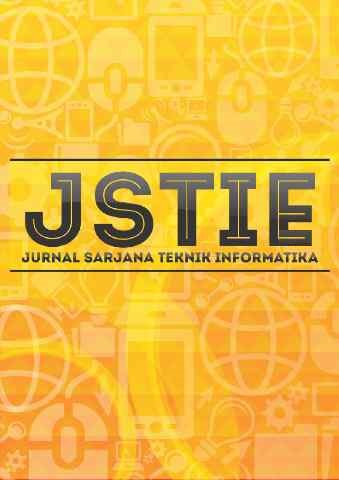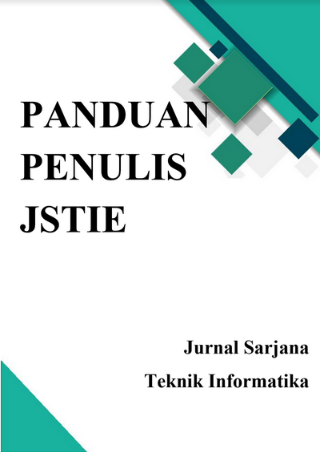Perancangan Film Animasi 3D Adab Berpuasa Menggunakan Metode Pose-to-Pose
DOI:
https://doi.org/10.12928/jstie.v11i2.26388Keywords:
Adab Berpuasa, Animasi 3D, Blender, Film Pose-to-PoseAbstract
Film animasi 3D telah menjadi media yang populer dalam menyampaikan pesan-pesan moral dan pendidikan kepada penonton. Dalam penelitian ini membahas perancangan film animasi 3D yang bertujuan untuk mengajarkan nilai-nilai dan adab berpuasa kepada penonton. Pembelajaran nilai-nilai dan adab berpuasa secara tepat menjadi penting untuk melaksanakan ibadah puasa dengan benar. Metode pose-to-pose digunakan dalam perancangan film animasi untuk mengoptimalkan proses produksi dan memberi kualitas visual lebih baik. Metode ini memungkinkan animator untuk mengatur pose utama dan pose kunci dalam adegan animasi sebelum melengkapi gerakan di antara kedua pose. Hal ini memungkinkan penekanan yang lebih baik pada ekspresi dan gerakan yang tepat dalam mengkomunikasikan adab berpuasa. Penelitian ini berhasil merancang dan membuat film animasi 3D dengan metode pose-to-pose untuk mengajarkan nilai-nilai dan adab berpuasa.References
C. K. Praveen dan K. Srinivasan, “Psychological Impact and Influence of Animation on Viewer’s Visual Attention and Cognition: A Systematic Literature Review, Open Challenges, and Future Research Directions,” Comput. Math. Methods Med., vol. 2022, hlm. 1–29, Agu 2022, doi: 10.1155/2022/8802542.
M. Toda dan K. Morimoto, “Effects of Ramadan Fasting on the Health of Muslims.,” Nippon Eiseigaku Zasshi, vol. 54, no. 4, hlm. 592–596, 2000, doi: 10.1265/jjh.54.592.
J. Liu, “Research on the design and production of 3D animation,” dalam 2nd International Conference on Computer Vision, Image, and Deep Learning, F. Cen dan B. H. Bin Ahmad, Ed., Liuzhou, China: SPIE, Okt 2021, hlm. 87. doi: 10.1117/12.2604794.
K. N. Truong, G. R. Hayes, dan G. D. Abowd, “Storyboarding: an empirical determination of best practices and effective guidelines,” dalam Proceedings of the 6th conference on Designing Interactive systems, University Park PA USA: ACM, Jun 2006, hlm. 12–21. doi: 10.1145/1142405.1142410.
Y. Shi, N. Cao, X. Ma, S. Chen, dan P. Liu, “EmoG: Supporting the Sketching of Emotional Expressions for Storyboarding,” dalam Proceedings of the 2020 CHI Conference on Human Factors in Computing Systems, Honolulu HI USA: ACM, Apr 2020, hlm. 1–12. doi: 10.1145/3313831.3376520.
J. Figuero Espadas, “A review of scene and sequence concepts,” Commun. Soc., vol. 32, no. 1, Jan 2019, doi: 10.15581/003.32.1.267-277.
K. B. Nelson, “Enhancing the Attendee’s Experience through Creative Design of the Event Environment: Applying Goffman’s Dramaturgical Perspective,” J. Conv. Event Tour., vol. 10, no. 2, hlm. 120–133, Jun 2009, doi: 10.1080/15470140902922023.
R. Beauchamp dan R. Beauchamp, Designing Sound for Animation, 0 ed. Routledge, 2012. doi: 10.4324/9780080491103.
S. Pauletto, “The sound design of cinematic voices,” New Soundtrack, vol. 2, no. 2, hlm. 127–142, Sep 2012, doi: 10.3366/sound.2012.0034.
S. Bakerman, R. R. Ansara, dan C. Joslin, “Creating 3D Human Character Mesh Prototypes from a Single Front-view Sketch:,” dalam Proceedings of the 13th International Joint Conference on Computer Vision, Imaging and Computer Graphics Theory and Applications, Funchal, Madeira, Portugal: SCITEPRESS - Science and Technology Publications, 2018, hlm. 248–255. doi: 10.5220/0006623702480255.
J. M. Dischler dan D. Ghazanfarpour, “A survey of 3D texturing,” Comput. Graph., vol. 25, no. 1, hlm. 135–151, Feb 2001, doi: 10.1016/S0097-8493(00)00113-8.
Y. Siddiqui, J. Thies, F. Ma, Q. Shan, M. Nießner, dan A. Dai, “Texturify: Generating Textures on 3D Shape Surfaces,” 2022, doi: 10.48550/ARXIV.2204.02411.
Graduate School of Design Department, Dongseo University, Busan, Republic of Korea. dkk., “Physical Rigging Procedures Based on Character Type and Design in 3D Animation,” Int. J. Recent Technol. Eng. IJRTE, vol. 8, no. 3, hlm. 4138–4147, Sep 2019, doi: 10.35940/ijrte.C5484.098319.
I. Baran dan J. Popovic, “Automatic rigging and animation of 3D characters,” dalam ACM SIGGRAPH 2007 papers, San Diego California: ACM, Jul 2007, hlm. 72. doi: 10.1145/1275808.1276467.
M. Betrancourt, “The Animation and Interactivity Principles in Multimedia Learning,” dalam The Cambridge Handbook of Multimedia Learning, R. Mayer, 1 ed., Cambridge University Press, 2005, hlm. 287–296. doi: 10.1017/CBO9780511816819.019.
S. Hegde, C. Gatzidis, dan F. Tian, “Painterly rendering techniques: a state of the art review of current approaches,” Comput. Animat. Virtual Worlds, vol. 24, no. 1, hlm. 43–64, Jan 2013, doi: 10.1002/cav.1435.
“Computer animation: algorithms and techniques,” Choice Rev. Online, vol. 46, no. 02, hlm. 46-0934-46–0934, Okt 2008, doi: 10.5860/CHOICE.46-0934.
M. Wiedmer, D. Agotai, R. Lenzin, dan F. Kempter, “Compositing Spaces - The Transferring of Space Relevant Film Elements into Computer-Generated Architecture-Related Animation,” dipresentasikan pada eCAADe 2006: Communicating Space(s), Volos, Greece, 2006, hlm. 604–607. doi: 10.52842/conf.ecaade.2006.604.
F. al-Zahra Abd al-Rahim Arafat Baghdadi, “A tangible enhancement of color in the design of animated film backgrounds, and its effect on increasing the efficiency of visual communication,” Int. J. Des. Fash. Stud., vol. 4, no. 1, hlm. 206–227, Jun 2021, doi: 10.21608/ijdfs.2021.187014.
F. Li dan Z. Wang, “Application of Digital Media Interactive Technology in Post-production of Film and Television Animation,” J. Phys. Conf. Ser., vol. 1966, no. 1, hlm. 012039, Jul 2021, doi: 10.1088/1742-6596/1966/1/012039.
Downloads
Published
Issue
Section
License
License and Copyright Agreement
In submitting the manuscript to the journal, the authors certify that:
- They are authorized by their co-authors to enter into these arrangements.
- The work described has not been formally published before, except in the form of an abstract or as part of a published lecture, review, thesis, or overlay journal. Please also carefully read Journal Posting Your Article Policy.
- The work is not under consideration for publication elsewhere.
- The work has been approved by all the author(s) and by the responsible authorities – tacitly or explicitly – of the institutes where the work has been carried out.
- They secure the right to reproduce any material that has already been published or copyrighted elsewhere.
- They agree to the following license and copyright agreement.
Copyright
Authors who publish with Jurnal Sarjana Teknik Informatika agree to the following terms:
- Authors retain copyright and grant the journal right of first publication with the work simultaneously licensed under a Creative Commons Attribution License (CC BY-SA 4.0) that allows others to share the work with an acknowledgement of the work's authorship and initial publication in this journal.
- Authors are able to enter into separate, additional contractual arrangements for the non-exclusive distribution of the journal's published version of the work (e.g., post it to an institutional repository or publish it in a book), with an acknowledgement of its initial publication in this journal.
- Authors are permitted and encouraged to post their work online (e.g., in institutional repositories or on their website) prior to and during the submission process, as it can lead to productive exchanges, as well as earlier and greater citation of published work.








